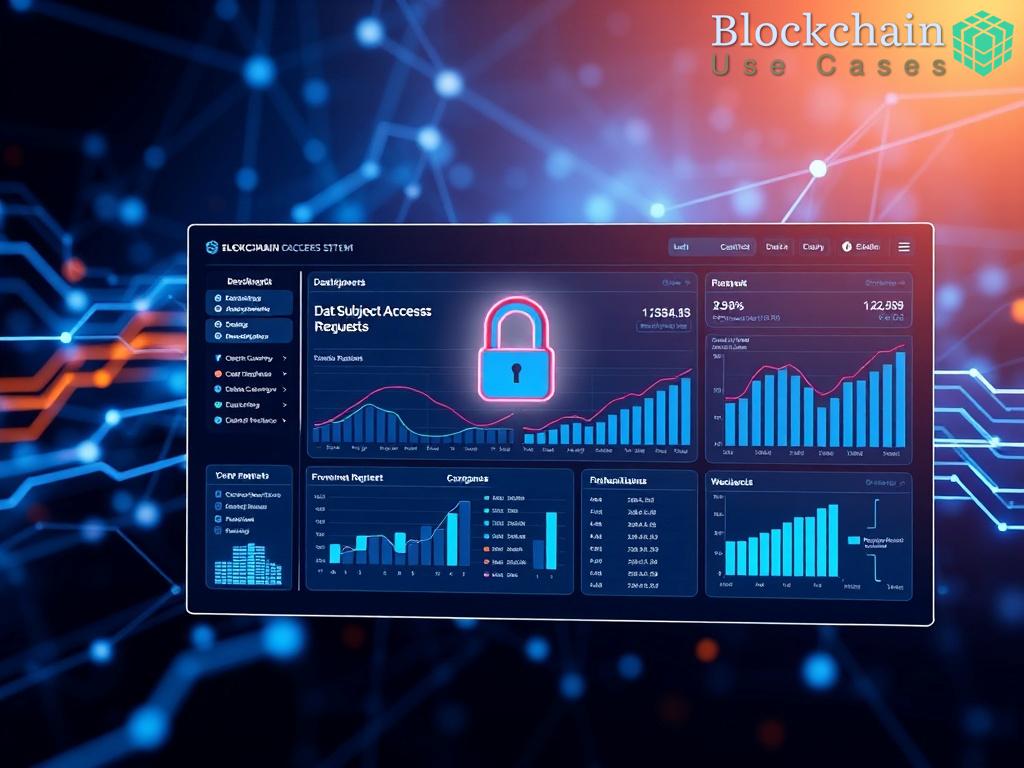Integrating Blockchain with Industrial Energy Management

The integration of blockchain technology into industrial energy management systems represents a transformative leap forward in enhancing security, transparency, and efficiency. As industries grapple with the complexities of energy consumption and management, blockchain offers a decentralized solution that can streamline operations, safeguard data, and foster trust among stakeholders. This article delves into the multifaceted benefits of combining blockchain with industrial energy management, showcasing how this innovative technology can reshape the landscape of energy efficiency and reliability.
Integrating blockchain with industrial energy management systems brings forth numerous advantages that can significantly improve operational workflows and energy utilization. The following list outlines some of the most compelling benefits:
- Enhanced Security: Blockchain’s cryptographic protocols ensure that data is secure from tampering and cyber threats.
- Improved Transparency: All transactions are recorded on a public ledger, allowing for real-time tracking and auditability.
- Decentralized Control: Eliminates the need for a central authority, enabling peer-to-peer energy transactions.
- Smart Contracts: Automates energy trading and management processes, reducing administrative overhead.
- Real-time Monitoring: Facilitates continuous tracking of energy consumption and production, fostering proactive management.
To understand the transformative potential of blockchain in industrial energy management, it is essential to compare traditional systems with blockchain-integrated counterparts. The table below illustrates key differences between the two approaches:
| Feature | Traditional Energy Management | Blockchain-Integrated Energy Management |
|---|---|---|
| Data Security | Centralized databases prone to breaches | Decentralized, encrypted data storage |
| Transaction Transparency | Opaque processes with limited visibility | Full transparency with accessible transaction history |
| Operational Efficiency | Manual processes with high overhead | Automated transactions and smart contracts |
| Trust Among Stakeholders | Dependent on third-party verification | Built-in trust through decentralization |
The comparison highlights how blockchain’s inherent characteristics can address the challenges faced by traditional energy management systems, ultimately leading to more efficient and secure operations.
Enhancing Data Security in Energy Systems via Blockchain

The industrial sector’s reliance on data-driven decision-making necessitates robust security measures, particularly in energy management systems where sensitive information is at stake. By leveraging blockchain technology, organizations can create a secure framework that mitigates the risks associated with data breaches and unauthorized access. In a blockchain-integrated environment, data is stored across a distributed network, which significantly reduces the likelihood of cyber-attacks. This decentralized approach not only ensures that data remains intact but also fosters a resilient infrastructure that can withstand potential threats.
One of the most compelling features of blockchain technology is its ability to maintain immutable records of all transactions. This characteristic is particularly beneficial for energy management systems, where transparency is paramount. Each transaction is securely logged on a public ledger, providing a clear audit trail that stakeholders can access at any time. This level of accountability not only enhances trust among participants but also encourages responsible energy consumption practices. By ensuring that all actions are traceable, organizations can swiftly identify anomalies and respond to potential security breaches before they escalate.
In addition to providing a secure data environment, the integration of smart contracts within blockchain systems serves to automate security measures. These self-executing contracts contain the terms of agreements directly written into code, enabling automatic execution once predefined conditions are met. This automation reduces the risk of human error and ensures compliance with regulatory standards. Furthermore, smart contracts can facilitate real-time monitoring of energy transactions, allowing for immediate detection of discrepancies or unauthorized activities. By harnessing this technology, industries can establish a proactive security posture that not only safeguards their data but also optimizes energy management processes.
Decentralized Energy Trading: Opportunities and Challenges

The rise of blockchain technology is unlocking new paradigms in energy trading, particularly in decentralized markets. This shift is empowering consumers and producers alike, allowing them to engage in direct energy transactions without the need for intermediaries. As industries evolve, the transition to decentralized energy trading systems presents both remarkable opportunities and inherent challenges that stakeholders must navigate. Understanding these dynamics is crucial for harnessing the full potential of blockchain in energy management.
Decentralized energy trading offers a myriad of benefits that can lead to more efficient and sustainable energy systems. By leveraging blockchain technology, this model promotes greater participation from various stakeholders, including residential consumers, small businesses, and renewable energy producers. The following list highlights the significant opportunities presented by decentralized energy trading:
- Empowerment of Consumers: Individuals can generate, buy, and sell energy directly, enhancing their autonomy and promoting energy self-sufficiency.
- Increased Market Efficiency: The elimination of intermediaries reduces transaction costs and speeds up the trading process.
- Promotion of Renewable Energy Sources: Decentralized trading encourages the use of renewable energy, as producers can sell excess energy generated from sustainable sources.
- Dynamic Pricing Models: Real-time data on energy supply and demand allows for flexible pricing, benefiting both sellers and buyers.
- Enhanced Grid Resilience: Distributed energy resources can improve grid stability by reducing reliance on centralized power plants.
Despite the promising advantages, the transition to decentralized energy trading is not without its challenges. Several factors must be addressed to ensure the successful implementation of blockchain in energy trading systems. Key challenges include:
- Regulatory Uncertainty: The evolving regulatory landscape can create hurdles for blockchain solutions, necessitating clear guidelines to foster innovation.
- Technological Integration: Existing energy infrastructure may require significant upgrades to accommodate blockchain-based systems, posing both technical and financial challenges.
- Market Volatility: The decentralized trading environment can lead to price fluctuations, necessitating mechanisms to ensure stability.
- Consumer Education: Stakeholders must be educated on how to engage in decentralized systems effectively, emphasizing the importance of understanding blockchain technology.
- Security Concerns: While blockchain enhances data security, vulnerabilities may still exist; thus, ongoing vigilance against cyber threats is essential.
By addressing these challenges head-on, industries can pave the way for a future where decentralized energy trading becomes a cornerstone of sustainable energy management. The synergy between blockchain technology and energy trading not only enhances operational efficiency but also contributes to a more resilient and environmentally friendly energy ecosystem.
Smart Contracts for Automated Energy Transactions
As industries increasingly adopt blockchain technology to enhance their energy management systems, the role of smart contracts emerges as a pivotal element in facilitating automated energy transactions. These self-executing agreements not only streamline operations but also ensure that transactions adhere to predetermined conditions without the need for intermediaries. This advancement not only drives efficiency but also opens the door to innovative business models in energy management.
Smart contracts operate on the principles of automation and trust, utilizing the blockchain’s immutable ledger to execute agreements based on coded instructions. Once the conditions of a contract are met, the smart contract autonomously executes the agreed-upon actions, such as transferring ownership of energy credits or initiating payments. This functionality significantly reduces the risk of errors and enhances operational efficiency.
Deploying smart contracts in energy management systems brings a plethora of advantages that can transform how industries conduct business. Below is a list of key benefits associated with this technology:
- Efficiency Gains: Automating transactions minimizes the time and resources spent on manual processes, enabling quicker responses to energy market changes.
- Cost Reduction: By eliminating intermediaries, organizations can significantly lower transaction costs, allowing for more competitive pricing.
- Enhanced Transparency: Each transaction is recorded on the blockchain, providing a clear and accessible audit trail that fosters trust among stakeholders.
- Real-Time Adaptability: Smart contracts can adjust terms based on real-time data, allowing for dynamic pricing and more responsive energy management.
- Regulatory Compliance: Built-in compliance features within smart contracts ensure that all transactions adhere to industry regulations, reducing the risk of legal complications.
The integration of smart contracts is poised to reshape energy market dynamics significantly. By enabling peer-to-peer energy trading, these contracts empower consumers and producers to engage directly, fostering a more decentralized and resilient energy market. This shift not only enhances market participation but also encourages the adoption of renewable energy sources, as producers can easily sell excess energy generated from sustainable practices.
Moreover, the ability to program specific conditions into smart contracts means that energy transactions can be tailored to meet individual needs, such as prioritizing renewable energy use or incentivizing off-peak power consumption. As such, smart contracts represent a critical advancement in the evolution of industrial energy management systems, driving efficiency, transparency, and sustainable practices.
Leveraging Blockchain for Real-time Energy Monitoring
In an era where energy efficiency is paramount, the need for real-time monitoring within industrial energy management systems has never been more critical. Blockchain technology emerges as a formidable ally in this quest, offering a robust framework that not only enhances data accuracy but also fosters transparency and trust among stakeholders. By integrating blockchain into energy monitoring processes, organizations can gain unparalleled insights into their energy consumption patterns, paving the way for smarter and more responsive energy management.
Real-time energy monitoring facilitated by blockchain technology transforms how industries track and manage their energy usage. The ability to access instantaneous data allows for more informed decision-making and can lead to significant operational improvements. Below is a list of compelling benefits that highlight the transformative power of real-time monitoring through blockchain:
- Instantaneous Data Access: Stakeholders can view energy consumption metrics in real time, enabling prompt adjustments and interventions.
- Enhanced Accuracy: Blockchain’s immutable ledger ensures that the data logged is accurate and tamper-proof, fostering a culture of accountability.
- Proactive Problem Resolution: With continuous monitoring, organizations can swiftly identify anomalies and address issues before they escalate, minimizing downtime.
- Optimized Resource Allocation: Real-time insights enable better forecasting and resource allocation, ensuring that energy is used efficiently and sustainably.
- Data-Driven Strategies: The insights gained from real-time monitoring can inform strategic decisions, leading to enhanced energy management practices.
The integration of blockchain into energy monitoring systems not only streamlines processes but also empowers stakeholders through increased transparency. Each transaction and data point is recorded on a decentralized ledger, accessible to all authorized participants. This level of transparency cultivates trust among consumers, producers, and regulators alike.
Moreover, by allowing stakeholders to trace energy flows and understand consumption patterns, blockchain technology encourages responsible energy practices. Users can gain insights into their usage habits, prompting them to adopt more sustainable behaviors. As a result, organizations can foster a culture of energy efficiency, driving collective efforts towards sustainability.
The future of industrial energy management systems looks promising with the continued evolution of blockchain technology. As industries embrace this innovative approach, the potential for enhanced real-time monitoring capabilities will only expand. Integrating advanced analytics and artificial intelligence with blockchain could further amplify the benefits, enabling predictive analytics that anticipates energy needs and optimizes consumption accordingly.
In conclusion, leveraging blockchain for real-time energy monitoring holds the key to unlocking a new era of industrial energy management—one characterized by heightened efficiency, transparency, and sustainability. As organizations continue to navigate the complexities of energy management, blockchain stands out as an essential tool in their arsenal, driving them towards a more secure and resilient energy future.


















